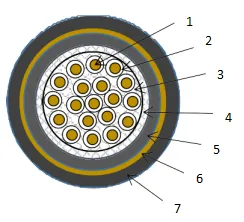10 月 . 02, 2024 02:45 Back to list
Manual Air Control Valve for Efficient Operation and Fluid Management Solutions
Understanding Manual Air Valves Functions and Applications
Manual air valves are essential components in a variety of pneumatic systems, playing a crucial role in the control and regulation of compressed air flow. These valves enable users to manually direct air to different parts of a system, providing a level of control that is vital for many industrial and mechanical applications.
A manual air valve operates by using a lever or knob that, when turned or pulled, opens or closes the valve. This simple yet effective mechanism allows for easy adjustments to air flow, making it possible for operators to respond to changing needs in real-time. The construction of manual air valves typically includes durable materials that withstand high pressure and varying temperatures, ensuring reliability and longevity in demanding environments.
One of the primary functions of a manual air valve is to control the air supply in pneumatic systems. By regulating the flow of compressed air, these valves help maintain optimal operating conditions for tools and machinery. This is especially important in manufacturing processes, where precise control over air pressure can significantly impact productivity and product quality.
In addition, manual air valves provide a safety mechanism in pneumatic systems
. They can be used to quickly shut off air supply in case of an emergency, preventing potential damage to equipment or harm to personnel. This added layer of safety is invaluable in workplaces that utilize pneumatic tools and machinery.manual air valve

Manual air valves come in various designs and configurations, including 2-way and 3-way valves. A 2-way valve has two ports, allowing air to flow in one direction or be completely blocked off. In contrast, a 3-way valve can divert air to two different outlets, providing greater versatility in managing air flow. The choice between these types depends on the specific application and the level of control required.
In terms of applications, manual air valves are prevalent in numerous sectors, including automotive manufacturing, packaging, food processing, and robotics. For instance, in an automotive assembly line, manual air valves can control pneumatic actuators that drive different assembly robots, ensuring that each robot receives the right air pressure when needed.
Ultimately, the use of manual air valves enhances operational efficiency and productivity across various industries. By enabling easy manipulation of air flow, they allow for better management of resources and improve the overall functionality of pneumatic systems. As technology advances, manual air valves will continue to evolve, incorporating more sophisticated mechanisms to enhance user control and system performance.
In conclusion, manual air valves are integral to the effectiveness and safety of pneumatic systems. Their ability to regulate air flow manually provides operators with crucial control over their equipment, ensuring smooth operations and fostering a productive work environment. Understanding the importance of these components is essential for anyone involved in industries that rely on pneumatic technology.
Share
-
Understanding the Differences Between Wafer Type Butterfly Valve and Lugged Butterfly ValveNewsOct.25,2024
-
The Efficiency of Wafer Type Butterfly Valve and Lugged Butterfly ValveNewsOct.25,2024
-
The Ultimate Guide to Industrial Swing Check Valve: Performance, Installation, and MaintenanceNewsOct.25,2024
-
Superior Performance with Industrial Swing Check Valve: The Essential Valve for Any SystemNewsOct.25,2024
-
Industrial Swing Check Valve: The Ideal Solution for Flow ControlNewsOct.25,2024
-
You Need to Know About Industrial Swing Check Valve: Functionality, Scope, and PerformanceNewsOct.25,2024